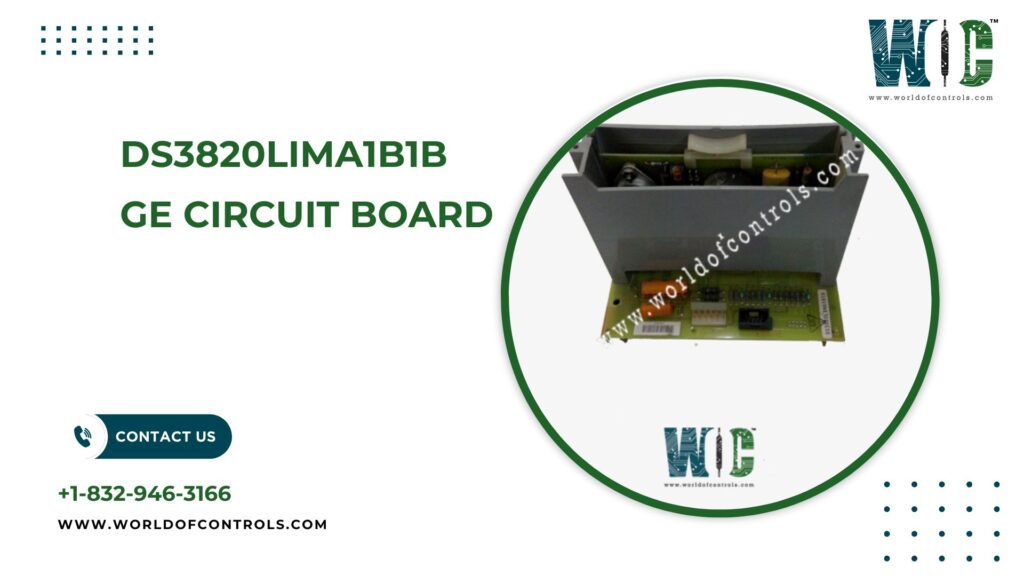Introduction
GE Circuit Boards are a critical component in the continued operation of legacy industrial systems, particularly in the power generation and turbine control sectors. These boards, originally developed by General Electric, form the backbone of automation and control in many aging systems that still operate globally.
While technology has evolved significantly over the decades, many facilities continue to depend on legacy systems due to their proven reliability and durability. In this context, GE Circuit Boards remain essential to performance, safety, and long-term operational success.
What is a GE Circuit Board?
A GE Circuit Board is an electronic assembly developed by General Electric, specifically designed for use in industrial control systems. These boards feature integrated circuits, resistors, capacitors, connectors, and other components that allow machines like gas and steam turbines to operate efficiently.
Most commonly found in systems like GE’s Speedtronic Mark series, GE Circuit Boards handle essential tasks such as signal processing, communication, and decision-making within the larger control system.
These boards are not just simple electronics—they are engineered to withstand high temperatures, electrical noise, and vibration, making them uniquely suited for heavy-duty industrial use.
The Role of GE Circuit Boards in Turbine Systems
Process Management and Control
In turbine control systems, a GE Circuit Board acts as the control center for managing power generation cycles. It controls processes such as startup, load adjustment, synchronization, and shutdown. Without these boards, precise and safe turbine operation would be impossible.
Real-Time Monitoring
GE Circuit Boards also enable real-time monitoring of turbine performance. They process data from sensors and adjust parameters dynamically to ensure stability and efficiency. This responsiveness is crucial in preventing system faults or dangerous failures.
Integration with Legacy Infrastructure
Since many power plants and industrial facilities still operate on legacy infrastructure, GE Circuit Boards ensure seamless integration with older components. Their compatibility with existing systems eliminates the need for costly overhauls.
Importance of GE Circuit Boards in Legacy Equipment
Legacy equipment refers to older systems still in operation despite being built years or even decades ago. These systems were often constructed with exceptional durability and are still capable of performing at a high level. However, their continued operation depends heavily on parts like the GE Circuit Board.
Key Benefits:
- Longevity: GE Circuit Boards are built for long-term use in extreme industrial conditions.
- Proven Design: Their design has been refined over decades of use, offering predictable and stable performance.
- Cost Efficiency: Maintaining and repairing legacy systems with original or refurbished GE Circuit Boards is more cost-effective than complete system replacements.
Challenges of Maintaining Legacy Systems
The scarcity of genuine replacement parts is one of the main issues with outdated industrial systems. Since many original GE Circuit Boards are no longer in production, sourcing genuine or compatible units can be difficult.
Additionally, many facilities face a knowledge gap. As newer generations of technicians are trained on modern systems, fewer professionals are familiar with the intricacies of older GE Circuit Boards and how they function within legacy turbine systems.
Solutions for GE Circuit Board Support
Refurbishment and Repair Services
GE Circuit Board repair and refurbishment services are provided by specialized businesses. These services involve diagnostics, component replacement, solder rework, and testing. Refurbished boards can often perform just as well as new ones, ensuring reliability without the cost of a full upgrade.
Aftermarket and Certified Replacements
Certified suppliers sometimes offer reconditioned GE Circuit Boards that meet original specifications. These boards undergo rigorous quality checks and functional testing to ensure they perform reliably within legacy systems.
By investing in these solutions, facilities can extend the life of their equipment and avoid unplanned downtimes.
Future Outlook
Although digital transformation is accelerating in the industrial sector, legacy systems will remain relevant for years to come. Many power plants, refineries, and manufacturing units continue to rely on systems that use GE Circuit Boards.
Hybrid models—where legacy and modern systems coexist—are becoming more common. GE Circuit Boards will continue to play a role in these setups, providing a bridge between traditional reliability and modern innovation.
Conclusion
GE Circuit Boards are more than just components—they are the heartbeat of many legacy industrial systems. Their continued use in turbine control and automation underlines their unmatched reliability and engineering excellence.
For businesses operating aging systems, maintaining and sourcing GE Circuit Boards is a strategic decision that supports efficiency, reduces cost, and extends asset life. As long as legacy equipment continues to serve its purpose, GE Circuit Boards will remain vital to the industrial landscape.

